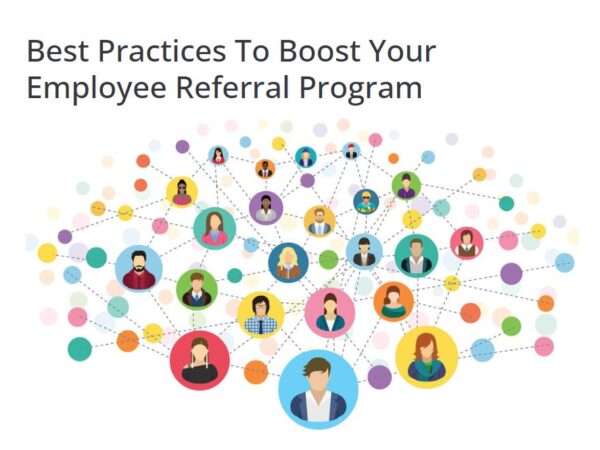Unlock Employee Insights With Listening Tours

The art of communication rests more in listening than in speaking.
We have two ears and one mouth because we’re supposed to listen twice as much as we talk.
You can’t understand another person’s experience until you’ve taken the time to listen.
If you want to be heard, first learn to listen.
When you talk, you only repeat what you already know. When you listen, you can learn something new.
There’s a reason we have so many sayings about the power of listening. Now, organizations are increasingly tapping into that power through listening tours.
Organizational benefits of listening tours
A listening tour is a scheduled meeting or period where leadership gathers information from stakeholders to better understand their thoughts, needs and interests. According to the human resources association SHRM, executives and managers implement listening tours for numerous reasons. Scheduling time for employees to voice their thoughts can:
- Build trust and support for new initiatives and workflows
- Facilitate input on current and potential workplace solutions
- Provide insights about the benefit offerings employees most value and would like to see
- Generate fresh feedback about the employee experience and workplace culture
- Support change management through new and changing workflows, policies and initiatives; mergers and acquisitions; and periods of hiring and layoffs
According to SHRM and Forbes magazine, listening tours can:
- Improve employee motivation, morale, engagement and productivity
- Encourage innovation, collaboration and creativity
- Build workforce trust and stronger relationships
- Uncover ideas and policies that aren’t working or could be improved
- Keep companies flexible in times of uncertainty and rapid change
- Enhance the implementation and acceptance of new initiatives
Benefit offerings such as wellness programs are examples of this final point. A listening tour can increase usage and appreciation by communicating resources and addressing employee wants, concerns and barriers.
The insurance agency Marsh McLennan conducted a global listening campaign to improve employee well-being. SHRM reports that this tour led to a wellness app, a dedicated website, and digital resources to support employees anytime and anywhere.
Advantages for executives and managers
Listening tours can help your organization uncover information that would otherwise stay siloed. In addition, it’s easy for leaders to hear only from people wanting to impress or deliver good news. Data from listening tours can enable leaders to make more informed decisions.
Executives and managers might go about these tours in slightly different ways. Still, they both stand to benefit by learning about operational systems from the employees carrying out the day-to-day processes.
An executive might select a diverse set of employees throughout all levels of your organization. They might also hold listening tours with clients and third-party stakeholders to better understand your organizational needs.
A supervisor would schedule a time to listen to everyone on their team. They may also speak with leaders of partnering departments elsewhere in your organization. This strategy establishes and strengthens relationships with team members and encourages companywide collaboration. A listening tour provides insights into employee expectations, workplace values, how they like to work and be managed, and other critical details.
Listening tours can consist of different formats, including:
- One-on-one meetings
- Small-group discussions
- Town halls
- A combination of the above
These formats can occur in person or virtually, depending on the makeup of your workforce.
Listening tour strategies
Before embarking on a listening tour, it’s essential to set your mission. This is where you define your reasons for holding a listening tour. Your purpose will inform your questions, timelines and participants. Create open-ended questions and leave room for employees to lead the dialogue. Sample questions may include:
- What are our company’s greatest strengths and weaknesses?
- What are we missing? What should we prioritize differently?
- How does our company support your efforts and growth?
Schedule days and times that respect employees’ workloads. During a listening tour, use various channels to communicate your findings. Channels could include internal memos or newsletters, company emails, social media posts or video updates. Reporting what you’ve learned demonstrates that you heard your employees and allows others to join the conversation.
Seek different opinions and ensure a safe space for employees to share concerns and ideas for improvement. Avoid any action that could be seen as retribution for speaking up. Prepare yourself ahead of time to hear comments you disagree with and handle them with grace. For example, with challenging feedback, thank individuals for their input and ask for time to respond. Reflecting on critiques can help you get the most out of your listening tour.
Put employees’ ideas into motion. Make a good-faith effort to act on your findings or explain why suggestions aren’t feasible. This step makes employees feel heard and encourages others to speak up. When appropriate, involve employees in solutions stemming from their participation. Some organizations create employee advisory councils and grant them the power to implement initiatives, notes SHRM.
Report measurements for success. Highlight new initiatives or strategies stemming from your listening tour. Note whether employee surveys indicate improvements in job satisfaction, productivity and workplace culture. And ask employees to share personal success stories based on their participation and results.
With careful planning, listening tours can be a crucial tool for innovation, collaboration and growth. For more information on execution and follow-through, contact your benefits adviser. They can help you brainstorm questions, set metrics and communicate findings.
This content is for informational purposes only and not for the purpose of providing professional, financial, medical or legal advice. You should contact your licensed professional to obtain advice with respect to any particular issue or problem.


